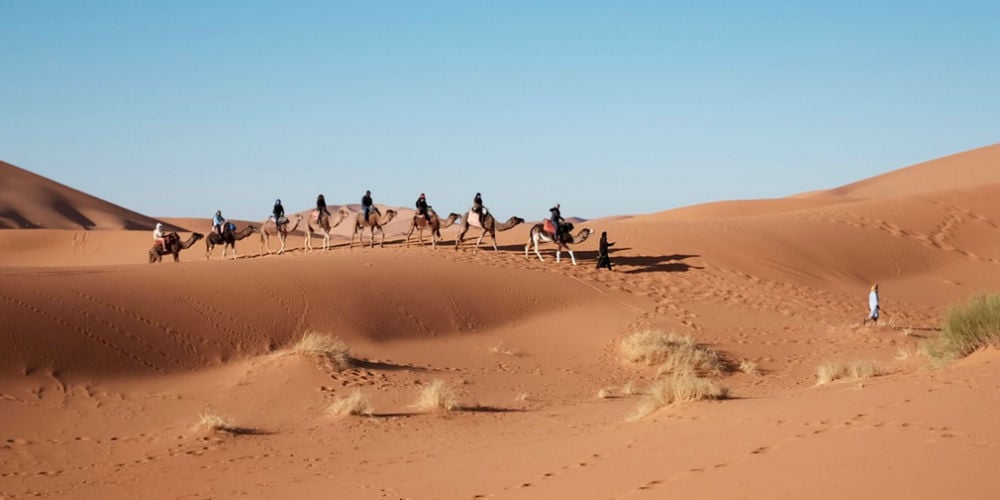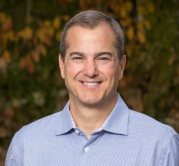Why credit unions should be more like camels

I was recently listening to a TED Talks podcast while working out about the discovery of fossil bones in the Arctic Circle. (Am I getting old or what? I used to listen to AC/DC when I worked out; now I’m listening to educational podcasts!) But the discovery of these bones by paleo-biologist made me think of our credit union clients.
First, the rest of the story about the discovery: the fossils that were found were identified as the leg bone of a large cloven-hoofed mammal and they were 3.5 million years old. After 4+ years of research and digging, it was determined that this discovery was the tibia of a dromedary. That’s right, a camel in the frigid cold of the Arctic Circle less than ten degrees from the North Pole. How could that be?
Now here’s how it relates to your credit union:
- Think about the incredible evolution of that animal over the past 3.5 million years and its unbelievable migration from the northern and coldest part of Earth to some of the warmest -the Sahara Desert and eastern Asia.
The camel had to re-use its cloven hooves from gaining traction in snow to gaining traction in sand. It had to reuse its famous hump as a fat-storage resource that helped it survive a barren cold climate to survive a barren hot climate. It had to change the shedding of its fur to progress from keeping it warm to assisting it remain cool.
How has your credit union evolved over the past ten years, never mind 3.5 million years? Have you learned to re-imagine and retrofit the resources that you have at your disposal like the camel did?
Many credit unions I see are still deploying staff the same way they did in the past, even though they need different and better talent today. Many are still conducting strategic planning the same way they always have and it doesn’t produce the new, better strategies they crave. Many are leading the same way they have in the past when younger generations of staff are more productive in different cultures and environments.
Those scientists believe the camel they discovered was much bigger and looked dramatically different than the camels we know and love today. I’m not suggesting your credit union needs to make similarly dramatic changes. However, being willing and able to redeploy your “hooves”, “humps”, and “fur” could make the difference in your credit union evolving into a thriving species in future generations or falling to the grips of extinction.
- Also, think about how the scientist had to totally change their perspective on their discovery before accepting the fact that they had found a camel at the North Pole. They looked at data the same way they always had only to be frustrated with the lack of answers. It was only after trying a new process for assessing and interpreting that data that they came to their profound conclusion.
How does your credit union process your data? How do you assess the facts that make up your organization? What new perspectives have you gained on your strengths and weaknesses over the past two or three years that might lead you to profoundly different outcomes?
Many credit unions I know still deploy staff the same way they did in the past even though their delivery channels are changing radically. Many are looking at their membership through the same “one size fits all” model even though their current and potential members can be easily segmented into clearly disparate dynamics. Many are still adhering to stale, old processes that contradict members’ desire for convenience, speed, and ease-of-use.
As new competitors enter our industry (some with far more robust resources than your credit union) we need to look at every aspect of our business from a new and fresh perspective. Steve Jobs instilled in Apple the concept of “Think Different” when they design a new product or launch a campaign. Richard Branson has engaged new teams at Virgin called “Disruptors” to challenge the manner in which they conduct all business activities. What has your credit union done to break the cycle of redundancy and sameness?
To begin your process of evolution, like the camel, here are a few ideas:
- See your business through new lenses. Ask new members about their experience with you and their feelings about your brand. Do the same with non-members, whenever possible. New employees are also good resources for this information. Talk to other business and community leaders what they think about how you do business and how you compare to other financial service providers.
- Share that data with your staff. Brainstorm ways to be better. Don’t just rely on the same group of decision-makers (i.e., Senior Management) but get ideas from all employees – frontline, back office, middle-managers, facilities workers, everyone has a voice. It’s amazing how insightful your staff can be … if you just ask them!
- Challenge the current mindset. Assess all your operations and processes. Find out what works and what doesn’t. Try to be 50% better in everything that you do. Look at speed and accuracy. Consider quantity as well as quality. A combination of incremental improvements can make you 50% better overall so no improvement is insignificant.
- Keep the ball rolling. Once you start this “discovery” process, keep it going. Make it a part of the fabric of your organization. Track and report your improvement. Recognize and even reward successes. Don’t stop looking differently at your data or finding ways to better use your resources.
Imagine if those scientists near the North Pole continued to look at their discovery through the same old lenses. They would’ve been limited to considering only those species known to exist in the frozen north tundra. Also imagine if the camel had not evolved and begun using its resources in new and different ways. It would’ve fallen to the fate of many of its brethren over the past 3.5 million years.
Just as evolutionary biology is a dynamic field, so should the industry of financial services be dynamic. The successful scientists don’t remain static with their assumptions; they evolve and look at their discoveries in new and fresh ways. They reframe what they thought they knew based on current and different data.
If your credit union becomes dynamic, adjusts to new discoveries, and reimagines your business model, like the camel, it too can stave off extinction and thrive in a new and different environment. After all, we’re all just one discovered tibia away from looking at our world in a whole new way.
If your credit union needs to embark on a dynamic new evolutionary process, my firm would be happy to assist with your scientific discovery. Learn more at www.fi-strategies.com or contact me at probert@fi-strategies.com or 636-578-3280.





